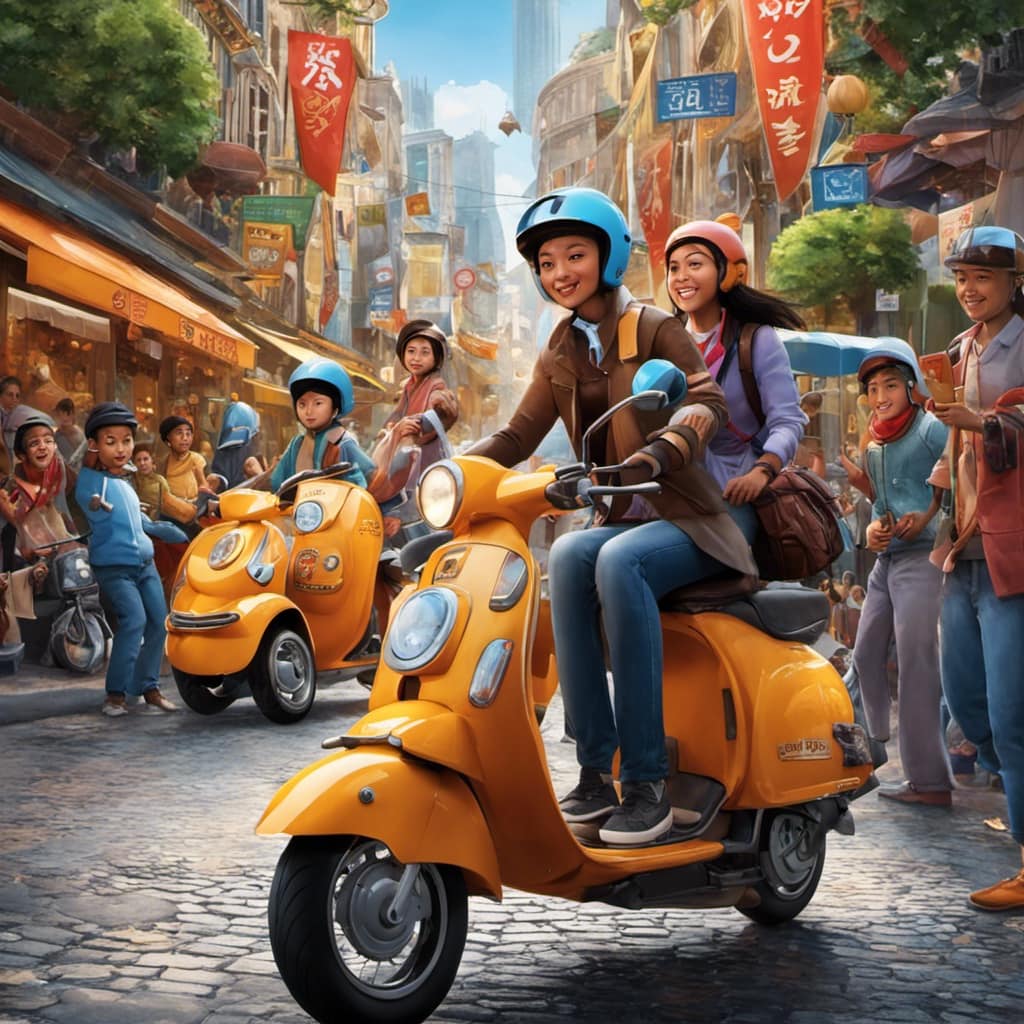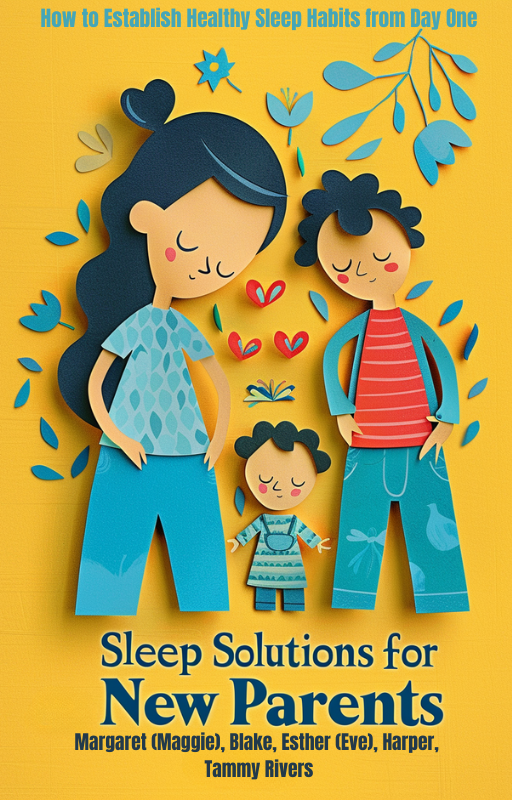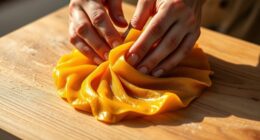Holding a beautifully crafted wooden toy, I am impressed by its deep importance. These toys, whether they are simple or intricate, symbolize more than just items for fun; they embody the essence of creativity and the values of sustainable living.
In this article, we will delve into the art of wooden toys and explore how they nurture the imagination and promote a deeper understanding of the world. Join me on this journey as we discover the magic of these timeless treasures.
Key Takeaways
- Waldorf Education emphasizes holistic development and understanding of child development.
- Wooden toys in early childhood development provide sensory stimulation and exploration.
- Wooden toys support imaginative play, creativity, and storytelling skills.
- Waldorf Education promotes eco-friendly and sustainable practices through the use of natural and sustainable materials in toys.
The Benefits of Wooden Toys in Early Childhood Development
I love how wooden toys provide sensory stimulation and exploration, encourage imaginative play and creativity, and teach children about the importance of sustainability.
Wooden toys are not just fun to play with; they also have numerous benefits for early childhood development. When children interact with wooden toys, they engage their senses through tactile exploration, which is essential for their cognitive and motor skill development.
The different textures and surfaces of wooden toys offer rich sensory experiences that help children develop their fine motor skills. Additionally, wooden toys foster imaginative play, allowing children to create their own narratives and develop their storytelling skills.
Enhancing Imaginative Play and Creativity With Wooden Toys
Playing with these toys sparks the imagination and encourages children to express their creativity.
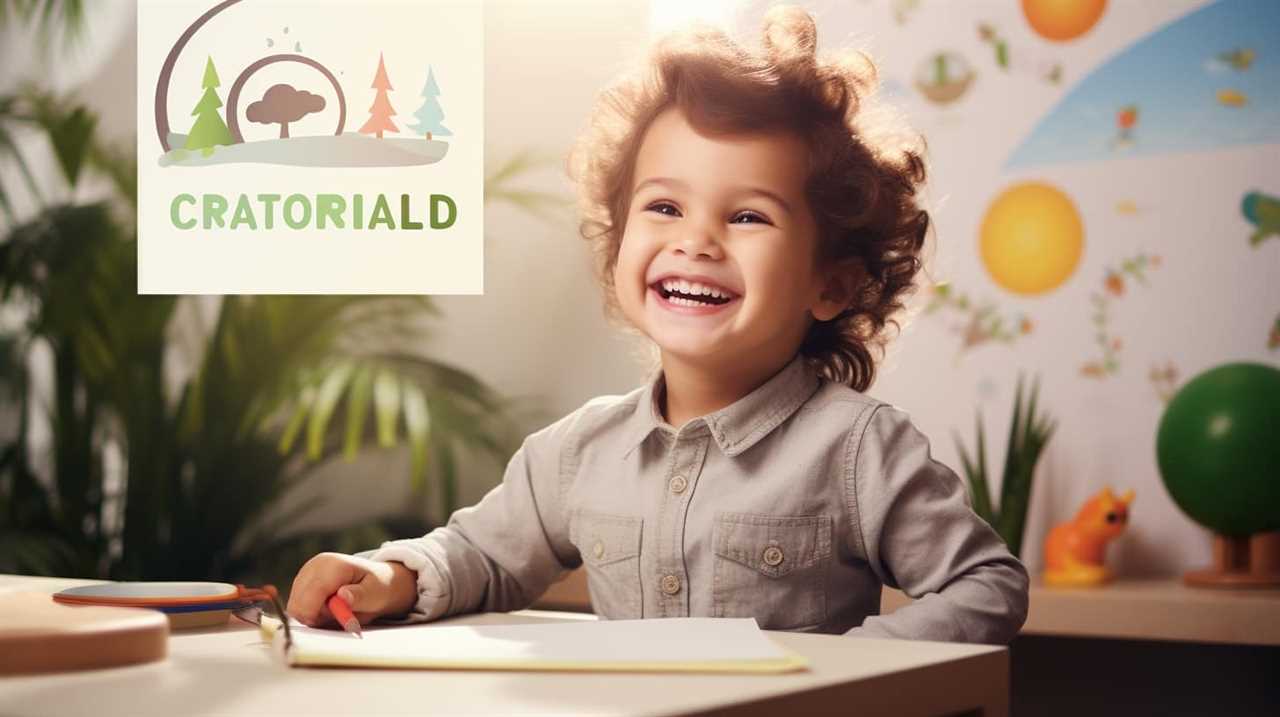
-
Customizable wooden toys provide children with the opportunity to personalize and design their playthings, enhancing their sense of ownership and creativity.
-
Role playing with wooden dolls and animals allows children to create their own stories and scenarios, developing their communication and storytelling skills.
-
By acting out different roles and scenarios, children can explore and understand social dynamics and emotions, fostering empathy and emotional intelligence.
Customizable wooden toys offer endless possibilities for imaginative play, empowering children to create their own worlds and narratives. They can create their own characters, dress them up, and invent exciting adventures. This type of play not only stimulates their creativity but also enhances their cognitive, emotional, and social development.
Embracing Eco-Friendly and Sustainable Practices in Toy Making
Embracing eco-friendly and sustainable practices in toy making is essential for promoting a greener and more responsible approach to child development.
Eco-conscious manufacturing and the use of sustainable materials in toys not only benefit the environment but also teach children about the importance of caring for our planet.
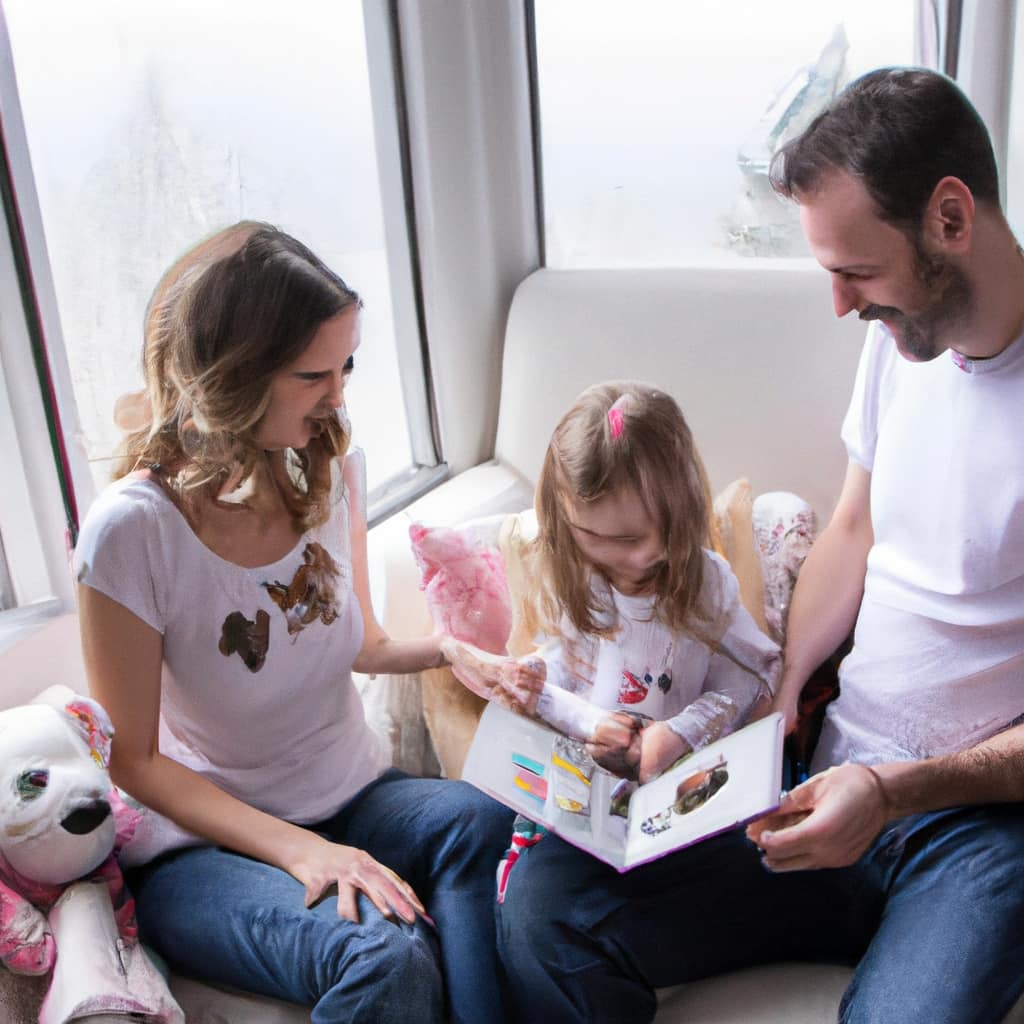
By choosing natural and sustainable materials, such as wood and non-toxic paints, we can reduce waste and minimize our carbon footprint.
These toys provide sensory stimulation and exploration, fostering fine motor skills and cognitive development. Tactile exploration through different textures and surfaces engages children’s senses and promotes their connection to the natural world.
Additionally, wooden toys encourage imaginative play and creativity, allowing children to express themselves and develop storytelling skills.
Hands-On Learning: Unleashing Creativity With Wooden Toys
Exploring the tactile textures and surfaces of wooden toys fosters a deeper understanding and connection to the natural world. When children engage in hands-on play with wooden toys, they are not only developing their fine motor skills but also problem-solving and critical thinking abilities. Here are three ways in which wooden toys foster these skills:
-
Exploration: Wooden toys provide children with the opportunity to explore different shapes, sizes, and structures. They can manipulate and experiment with these toys, allowing them to discover how things work and find creative solutions to challenges.
-
Problem-solving: Playing with wooden toys requires children to think strategically and find solutions to various problems. Whether it’s fitting puzzle pieces together or building a structure, they learn to analyze, plan, and execute their ideas.
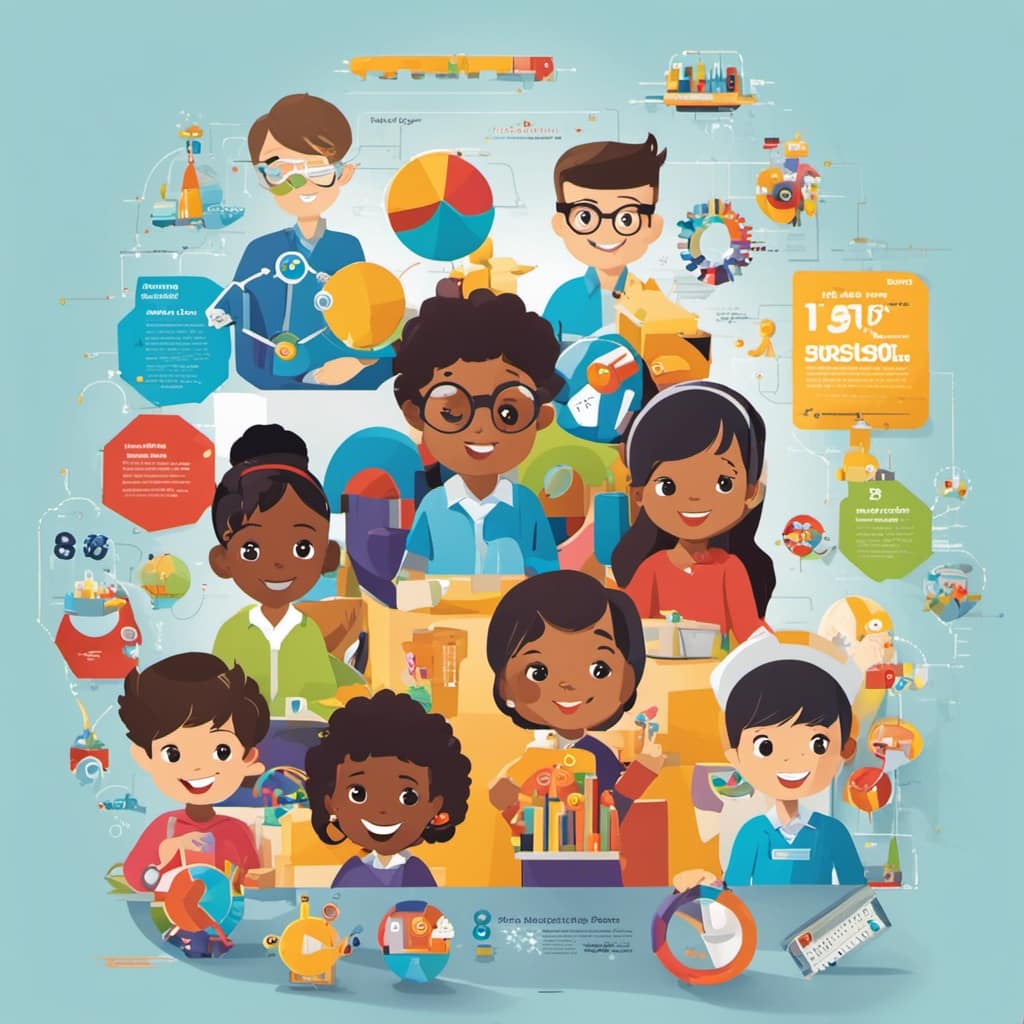
-
Fine motor skills: Wooden toys require precise movements and hand-eye coordination. By grasping, stacking, and manipulating these toys, children develop their fine motor skills, which are essential for tasks such as writing and self-care.
Through hands-on play with wooden toys, children not only have fun but also develop important cognitive and physical skills that will benefit them in various aspects of their lives.
The Intersection of Art, Creativity, and Sustainability in Wooden Toy Design
I’m fascinated by how the design of wooden toys can merge artistic expression with eco-friendly practices.
Artistic craftsmanship plays a crucial role in creating unique and visually appealing wooden toys. From the intricate carvings to the smooth finishes, each detail showcases the skill and creativity of the artisan.
But it’s not just about aesthetics; sustainable design is equally important. Wooden toys are often made from responsibly sourced materials, ensuring that the environment is not harmed in the process. Additionally, these toys are durable and long-lasting, reducing the need for constant replacements.
Frequently Asked Questions
How Can Wooden Toys Support the Holistic Development of a Child?
Wooden toys support the holistic development of a child by providing sensory stimulation, encouraging imaginative play, and developing fine motor skills. The use of natural materials in toy manufacturing enhances their eco-friendly and sustainable nature.

What Are Some Examples of Open-Ended Exploration With Wooden Toys?
Open-ended exploration with wooden toys allows for limitless possibilities and imagination building. Children can create their own stories, scenarios, and worlds, fostering creativity and problem-solving skills while engaging in fun and imaginative play.
How Do Wooden Toys Promote a Love for Sustainable Play and Responsibility Towards the Environment?
Wooden toys promote a love for sustainable play by using natural and sustainable materials. They teach children about environmental responsibility, fostering a connection with nature. Through play, children learn the importance of caring for the environment.
What Specific Skills Can Children Develop Through Hands-On Learning With Wooden Toys?
Children can develop problem-solving and fine motor skills through hands-on learning with wooden toys. They learn to think critically, manipulate objects, and solve challenges, fostering their cognitive development and dexterity.
How Does the Use of Natural and Sustainable Materials in Wooden Toys Contribute to the Overall Artistic Design and Aesthetic Appeal?
Using natural and sustainable materials in wooden toys enhances their artistic design and aesthetic appeal. Material selection impacts environmental sustainability, making these toys visually appealing while promoting eco-friendly practices and a love for the environment.
Conclusion
As I conclude this exploration of the art of wooden toys, I am reminded of the profound impact they have on early childhood development.
Like seeds planted in fertile soil, these toys nurture creativity and sustainability, awakening a world of imagination within young minds.

They are the keys that unlock the doors to endless possibilities, guiding children on a journey of self-discovery and expression.
Through their eco-friendly and sustainable nature, they teach our little ones the importance of caring for our planet.
So let us continue to embrace the beauty of wooden toys, for they are not just mere playthings, but powerful tools that shape the future.


